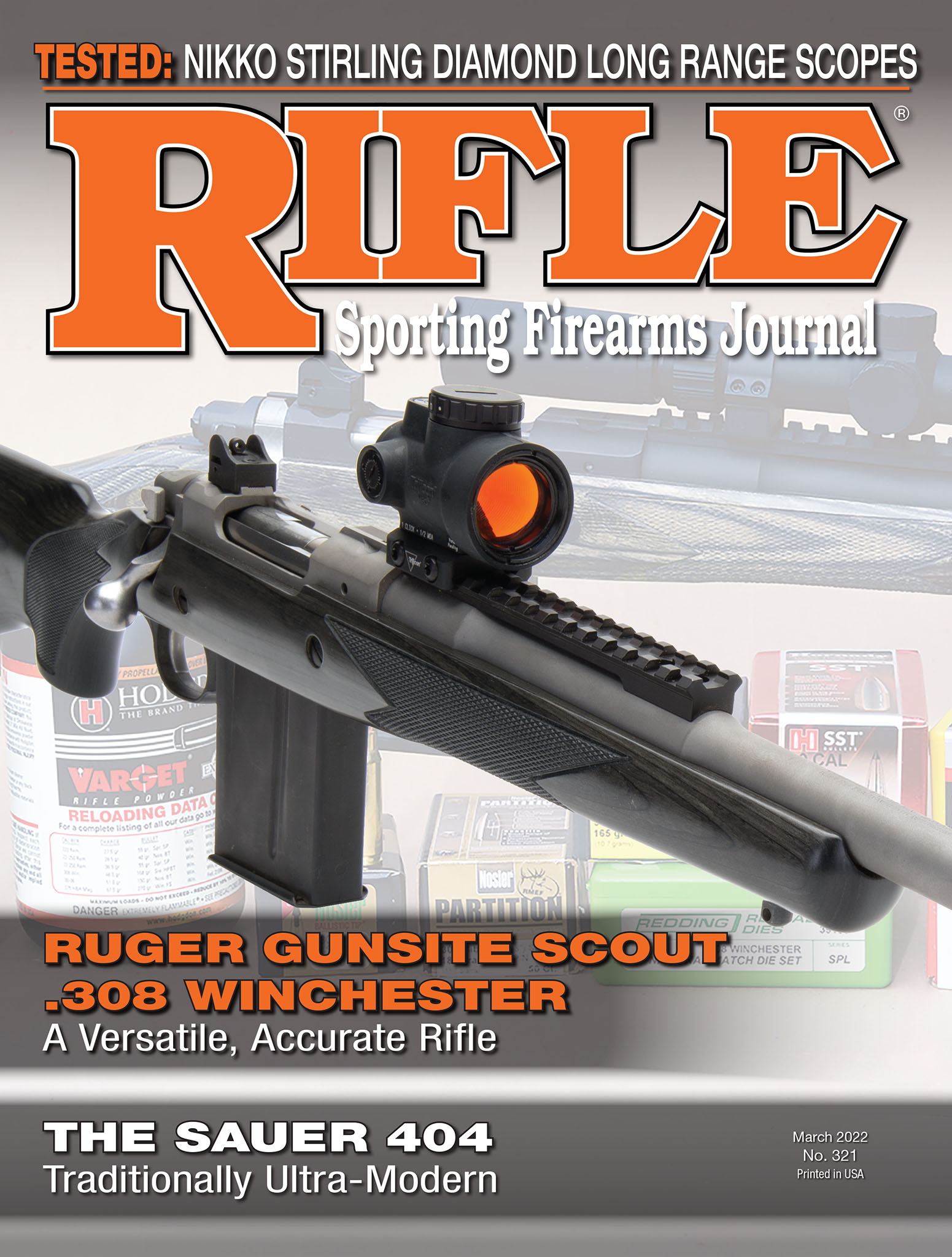Down Range
Cimarron Model 1894 .38-55
column By: Mike Venturino | March, 22
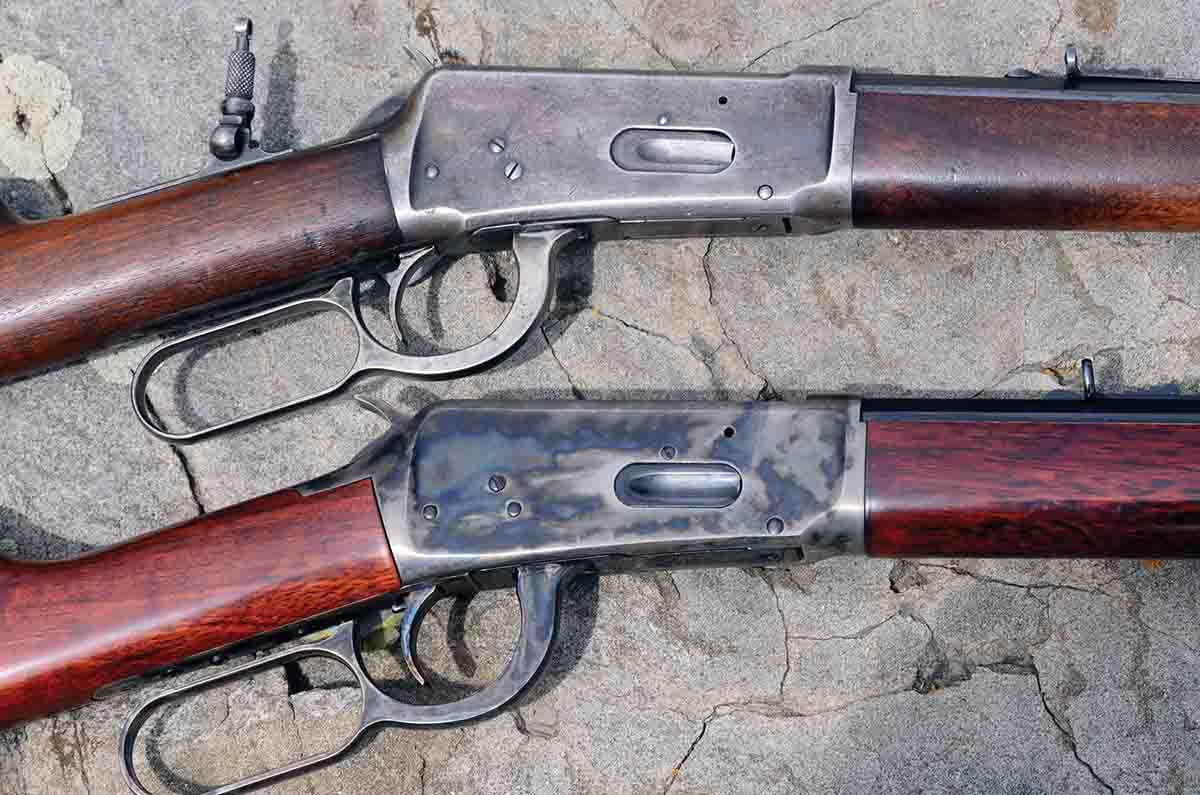
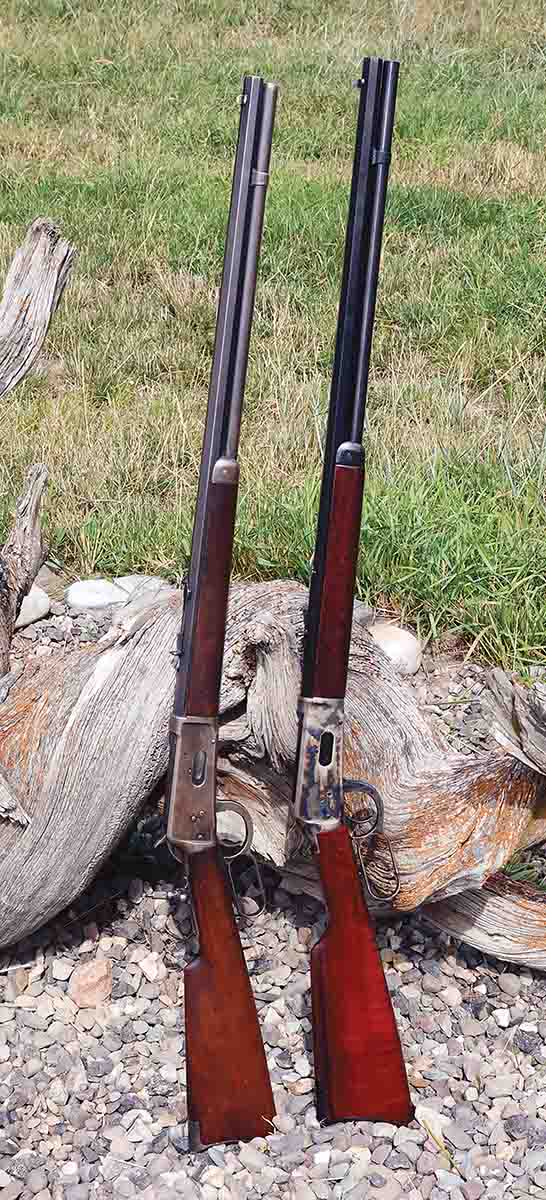
Along with reloading dies, I also bought a box of .375-inch jacketed softpoint bullets and a bullet mould for 255-grain gas-checked bullets, which I sized at .375 inch. Imagine my disappointment when every one of those bullets tumbled in flight. From 100 yards, not one hit the four-foot square backboard point on.
Okay, that was when I got out my pure lead roundballs, wooden dowels and micrometer, all necessary for slugging rifle barrels. That slug measured right on at .379 inch, which was my first hint that all Winchester’s .38-caliber rifles, except .38 WCF/.38-40s, were nominally .379 inch across their grooves. (I’ve slugged more Model 1894 .38-55s, Winchester Model 1886 .38-56s and Model 1895 .38-72s along the way.)
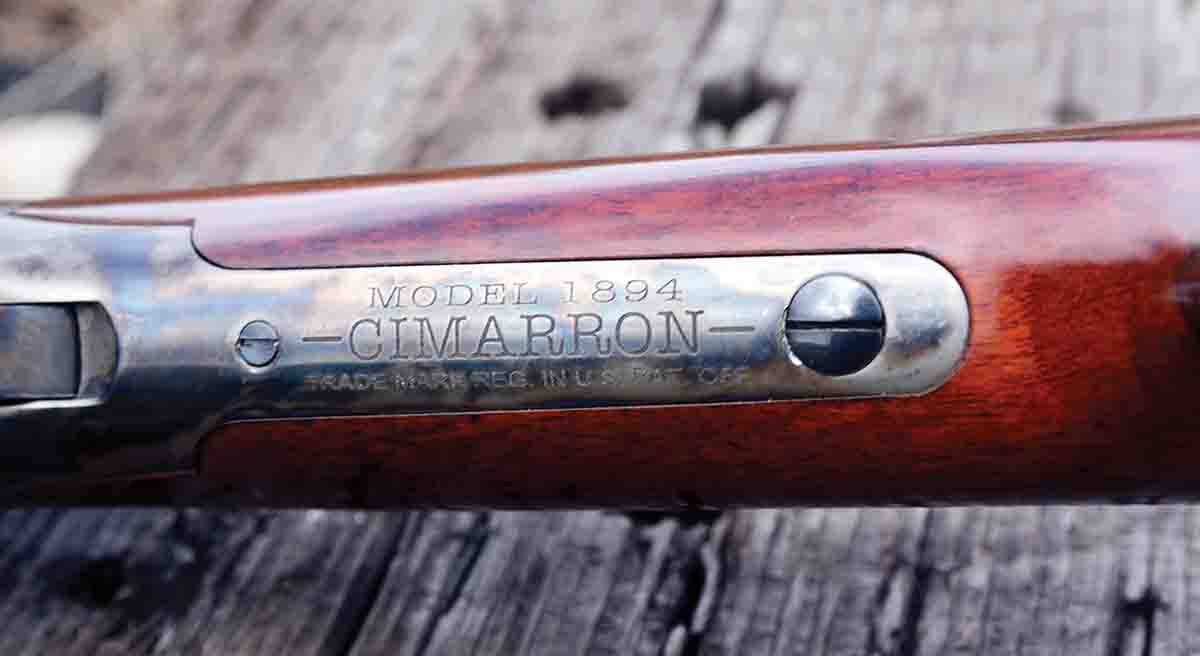
In those days, RCBS offered a bullet mould numbered 38-255-FN. It was a gas check, flatnose. Along with it I acquired both .379- and .380-inch lube/sizing dies. Right from the beginning, those RCBS bullets sized either diameter shot just fine. Over time, many powder charges were tried, along with various alloys for the cast bullets. I finally settled upon 19 grains of one of the many brands of 5744 powder that have come and gone. (They have all shot similarly for me.) Bullet alloy of 1:20 (tin-to-lead) became my standard, more because I stock more of it than anything concerning performance. (Sadly, someone convinced RCBS to remodel that .38-355-FN bullet mould to No. 37-255-FN dropping .375/.376 inch bullets, which do not work well in vintage Winchester .38 caliber rifles.)
After that, considerable bench testing of loads and successfully hunting mule deer and pronghorns, my shooting of .38-55 leverguns pretty much ended back in the 1990s. Then in 2019, I was made aware that Cimarron Arms was importing Uberti-made Model 1894s in .30-30 (ho-hum) and .38-55 (exciting). Being a fan of Uberti-made Winchester replicas, I ordered one and it did not disappoint.
In configuration, it is a dead ringer for my 1897-made Model 1894 .38-55. It has a 26-inch octagonal barrel, a two-piece stock of European walnut and weighs a mere 7.5 pounds. The magazine is the full length of the barrel with a nine-round capacity. The buttstock is a straight grip with a crescent steel buttplate. The forearm is slender as is my original’s and capped in steel. This Uberti’s receiver and lever are color case hardened with the buttplate, barrel, forend cap and bolt nicely blued. Sights are a buckhorn rear with a blade front. Both are dovetailed to the barrel so that windage zero can be adjusted by drifting them laterally. A good feature also borrowed from vintage Winchesters is that there is a “cramp” screw in each sight so that they can be locked tightly in place. The rear buckhorn sight had a notched slider. Each notch is meant to raise zero by 50 yards, but this should be determined by trial and error shooting.
Worthy of note is that someone at Uberti/Cimarron deemed it important that its tang is drilled and tapped for mounting a tang peep sight such as Lyman’s No. 2. This is what I installed on my vintage ’94 decades back. These sights come with proper length screws. There is no lawyer-mandated, modern safety arrangement. Winchester’s original safety arrangement of a hammer half-cock is used in the Uberti replica and so is Winchester’s development of a spring-loaded pin protruding from the lower tang. In practice, the lever must be pulled snug to the tang to depress that pin and allow the rifle to be fired.
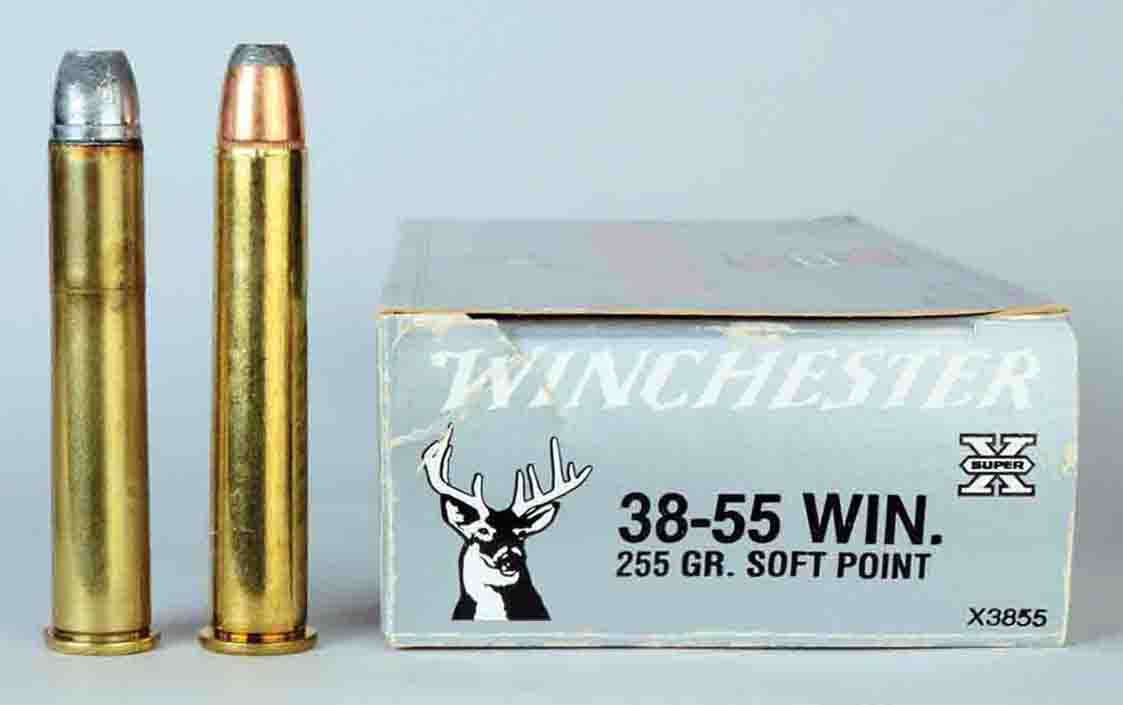
Winchester designed the Model 1894 with smokeless powder ammunition in mind. Therefore, it is a relatively strong lever action. Instead of the twin locking lugs of the previous Models 1886 and 1892, the 1894 has one large single lug at the rear of the bolt with a hole in the center so its hammer can strike the firing pin. That said, I would not urge anyone to try souping up .38-55 handloads. The top point of that crescent shaped buttplate helps discourage that.
Starting with my cast bullet handloads, it was determined this Cimarron 1894 .38-55 is suitably accurate with five-shot, 100-yard groups in the 2.5- to 3.5-inch range. Then, I turned to Winchester .38-55 factory loads with softnose bullets. As expected, they grouped several times larger at 100 yards than my handloads. To prove my point, a bullet was pulled from one. It was undersized at .376 inch.
My favorite cast bullet handload mentioned before hit 1,389 fps with 42 fps variation in a five-shot string and Winchester’s factory load with 255-grain JSP bullets chronographed 1,180 fps with only a 7 fps variation, also in a five-round string. By the way, rifling twist rate for the Uberti/Cimarron Model 1894 .38-55 is 1:18.
Many of today’s riflemen, if they are aware of Winchester leverguns at all, will think .30-30 simultaneously with the Model 1894. However, it’s a little known fact that the Model 1894 was not introduced with the .30-30 because Winchester had not mastered making barrels of nickel steel. Harder steel barrels were necessary for jacketed bullets as envisioned for Winchester’s new smokeless powder cartridges. Therefore, the Model 1894 was introduced for black-powder/lead bullet .38-55 and .32-40 ammunition.
Handloaded properly and used at modest iron sight distances, the .38-55 is suitable for American game up to the size of black bear. Hunters who are cast bullet shooters and want a fast handling, repeating levergun could do much worse than this new Model 1894 replica .38-55.


